Science & SkepticismSurfboard Hydrodynamics: What’s Really Happening Beneath Your Board?
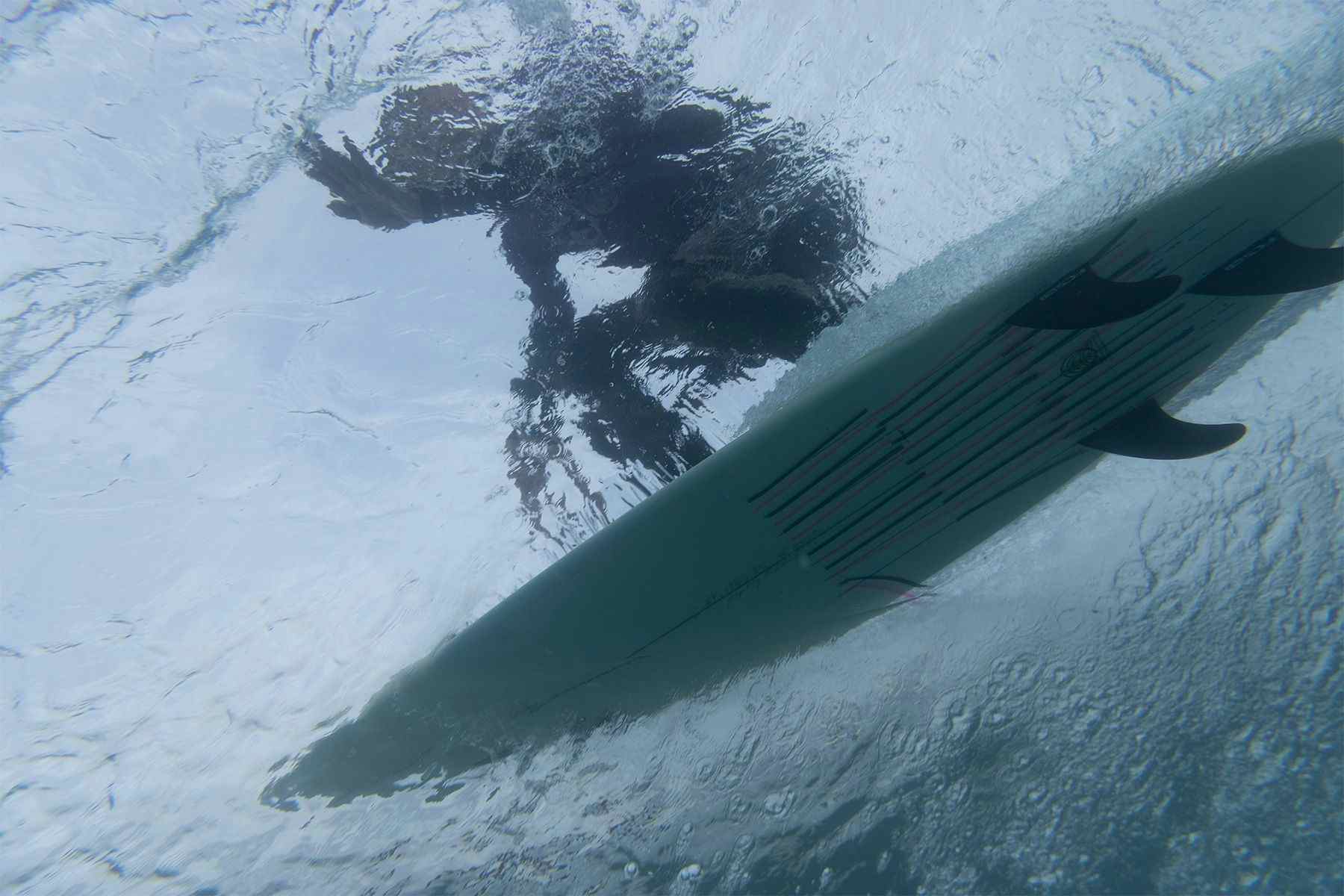
Recently, I had the opportunity to do a basic experiment into the hydrodynamics of a surfboard – what’s really happening underneath your surfboard when you surf along a wave – at The Wave inland surfing destination in Bristol, UK. It fulfilled a longstanding ambition, and I hope will be one of the first steps or catalysts for further scientific study into this area.
I have always been interested in how things work, and why things work, ever since I was a small child. I used to love going to the science museum and seeing these big machines with cutaways and cross sections, and explanations of how they work. Flying and aviation has always fascinated me, and even when I was pretty young I could probably have told you how a wing works, long before I would have studied it in school. It was just the sort of thing that I was interested in. When I left school I started teaching surfing, and I started teaching sailing as well. There is a fairly standard two day course for new and novice sailors in the UK that teaches them how to sail a little dinghy, and a part of that course is learning the basic aerodynamic theory of how a sail works as a wing to generate lift, and how that lift then interacts with the keel and the pressure of water against the keel on the bottom of the boat to produce forward motion. There's a lot of scientific knowledge in sailing that's just standard practice and a lot of that theory is taught from the very beginning. I really enjoyed teaching that module.
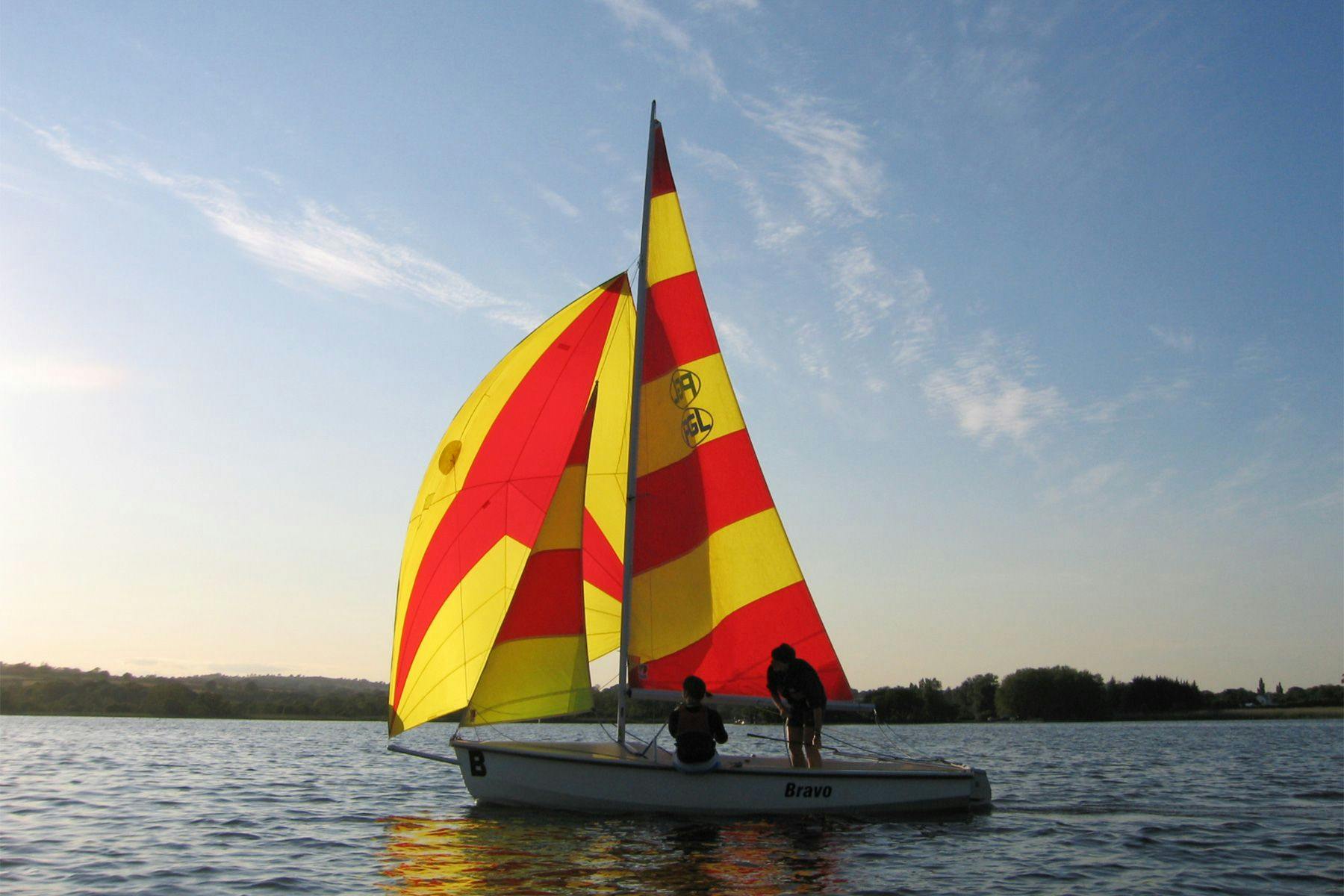
It has always surprised and frustrated me that not only is an understanding of how a surfboard and the act of surfing works not taught in beginner surf lessons, but that the knowledge doesn’t even seem to exist within the surfing industry in general. I consumed every book that I could find on the topic, and read every article on the internet to try better understand how a surfboard works, how it moves through the water, and how the fins and the rails interact. Some of it made sense. Some if it was very counter to what I had already learnt about how aeroplanes, sailing boats, and powerboats work. There seemed to be a lot of pseudo-science at play when it came to surfboards. But there was no scientific evidence either way, so maybe it is like that or maybe it's not? Everything that I knew about how a boat works and how a plane works generally applies to travel on a fairly flat plane - like a boat moving over flat water. The complex environment, motion and interactions of water moving up a wave face and a surfboard moving across it at ninety degrees to that (give or take) couldn’t easily be modelled. No scientific experiments had been undertaken to try to understand it because it’s so niche – the surf industry is tiny compared to aerospace and marine.
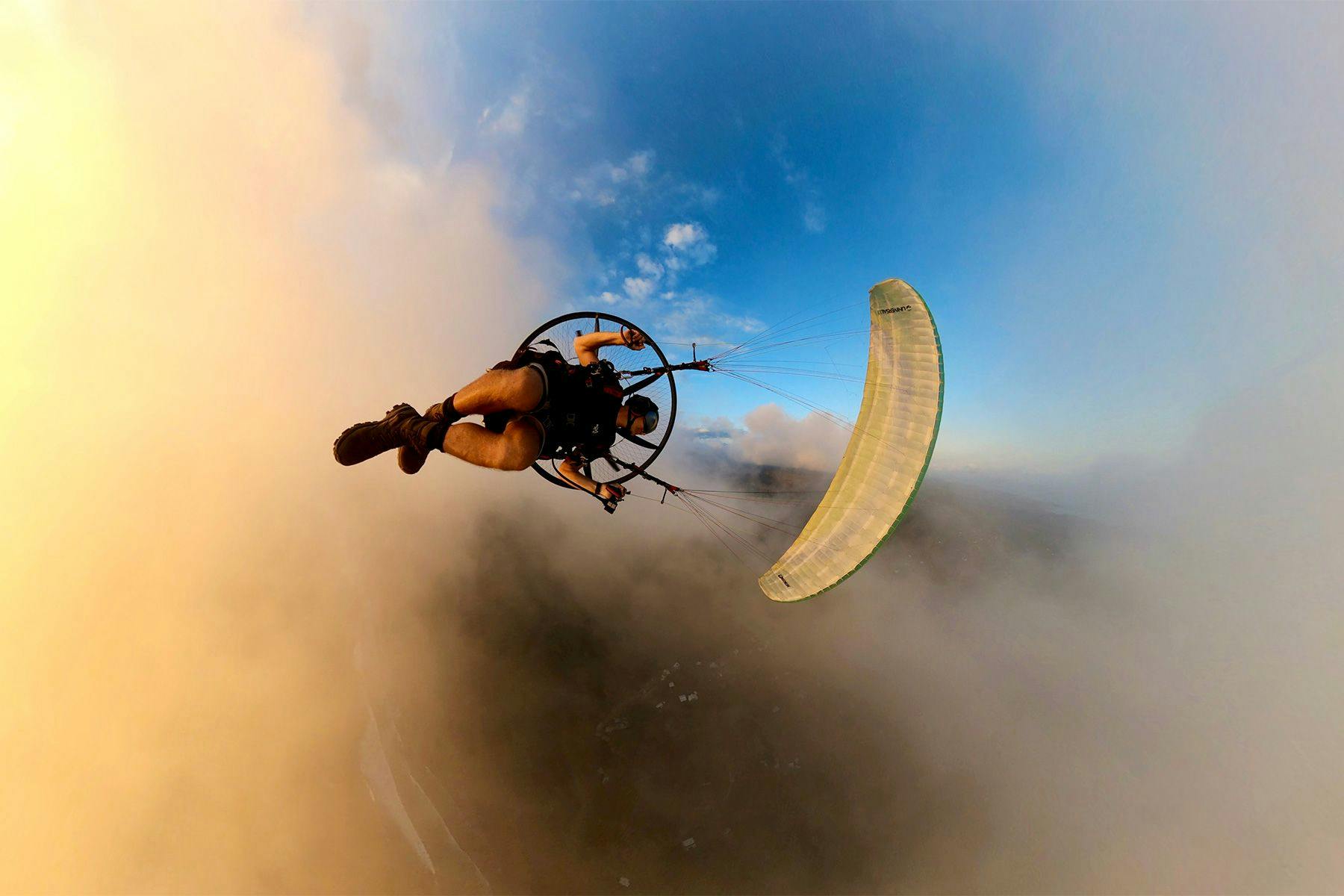
Based on what I already knew and understood, I developed a hypothesis for how I thought a surfboard seemed to be working as it travelled across a wave in trim. As much as I tried to tweak and adjust that model and hypothesis, even in my own crude “in the field” way, it seemed to work. I feel fairly confident that if it's not completely correct, that it's close to being correct. But, I've never had any evidence for it.
How We Tested My Hypothesis Of Surfboard Hydrodynamics
There is a fairly standard practice within sailing and flying of using bits of coloured string attached to surfaces to visualise the flow (of water or air) over that surface. They are called “telltales”. In sailing, they are found on the edge of a sail and act as a visual aid to help set the sail to the perfect angle to the wind, to get as much power out of it as possible. When new aeroplanes are being tested, telltales will be placed all over the wings and filmed during flight so that the pilot and designer can see the air flow separation as the wing starts to move towards a stall.
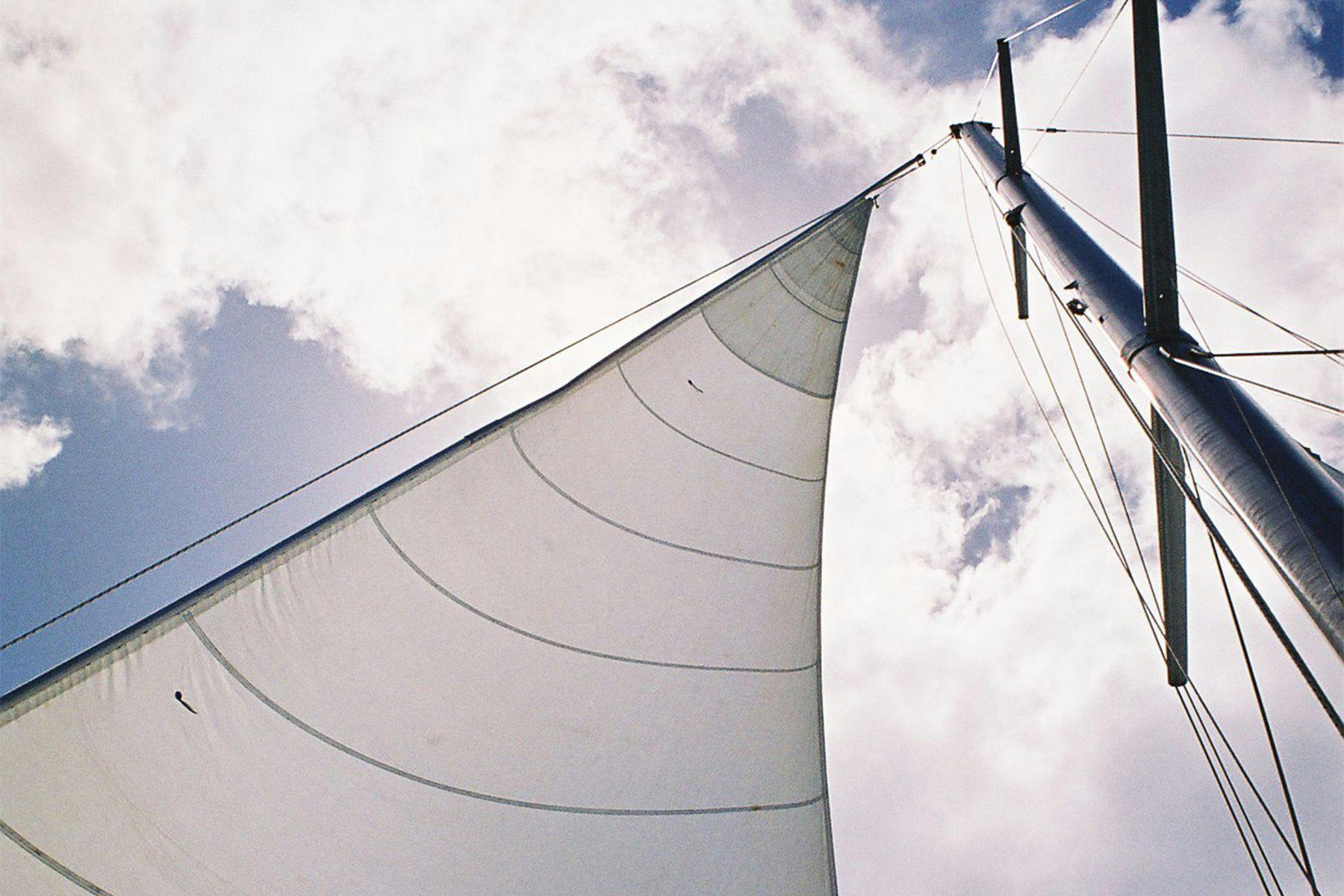
I can remember, years and years and years ago, the first time I saw a photo of a surfer through the back of a crystal clear wave from underwater, and the bottom of their surfboard was clearly visible.
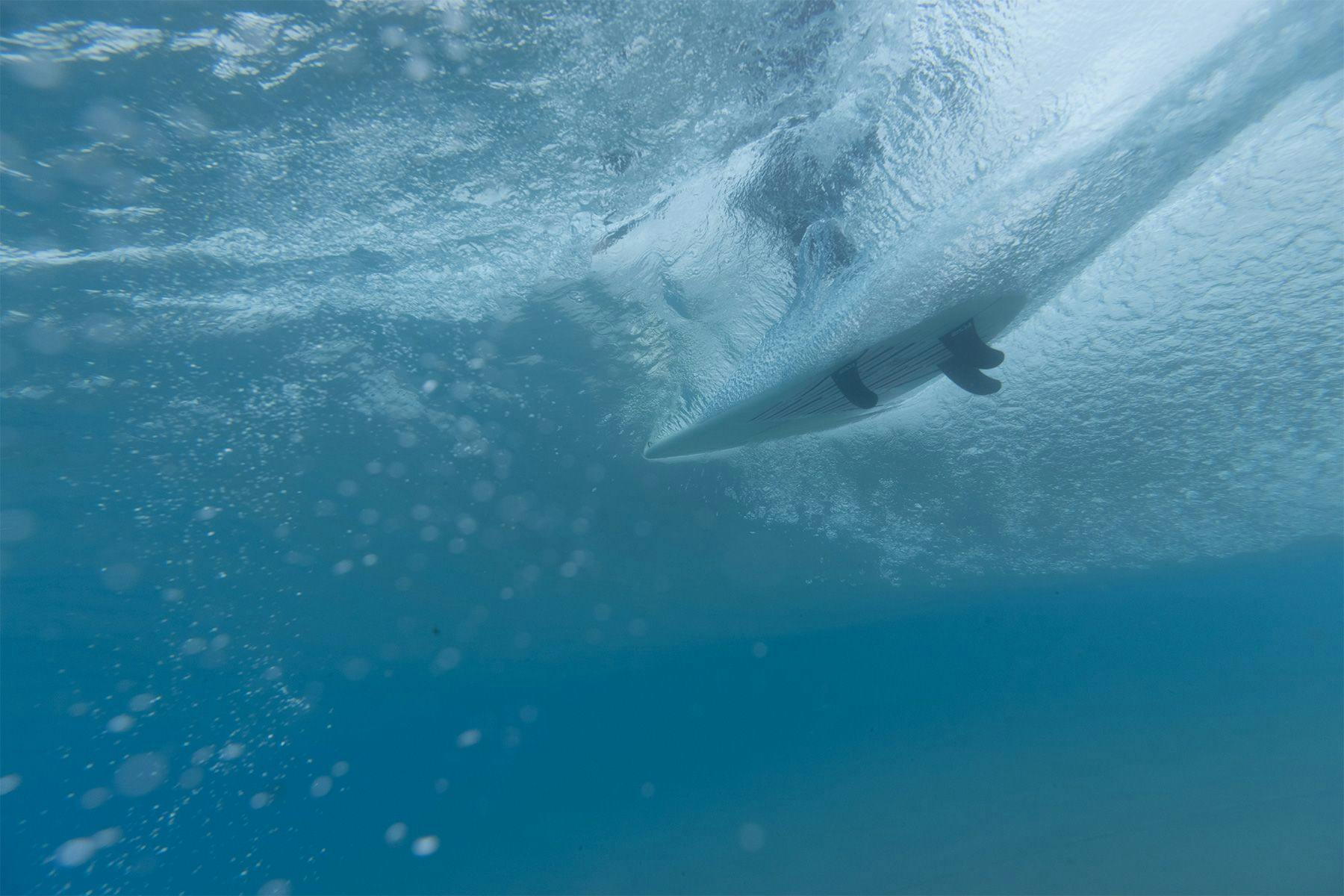
I have thought for a very long time how amazing and insightful it would be to use telltales on the bottom of a surfboard and to get a photograph like that so that I could see what the actual water flow is across the bottom of a surfboard as it’s travelling along a wave. I have since seen one scientific paper that tried to do something similar, using a string telltale in a very small area on the bottom of a surfboard being filmed by a small camera mounted into a hole cut through from the deck.
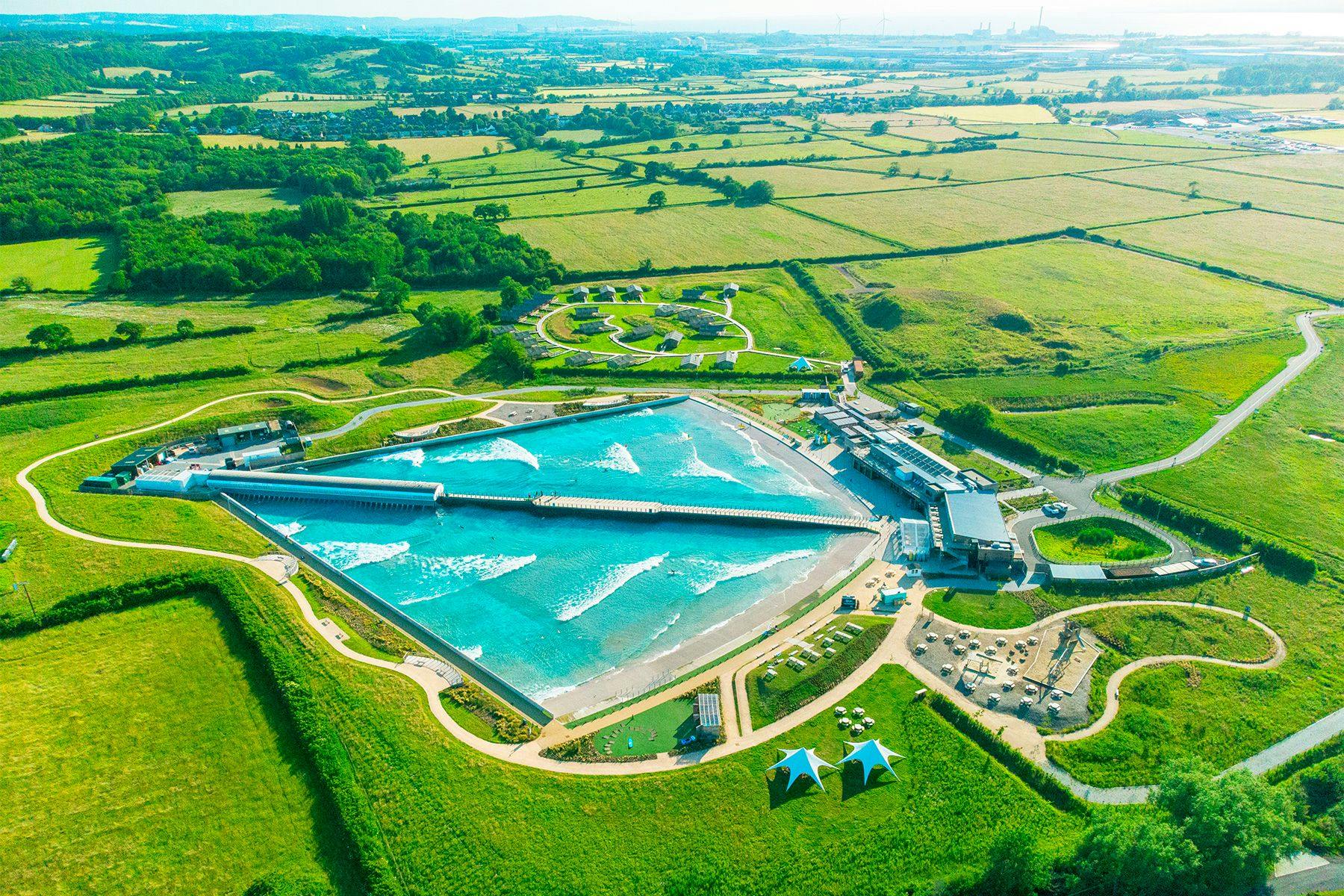
The Wave in Bristol, UK, opened the day after I last left the UK before COVID-19. It was two years after it opened before I was able to surf there, even though it's only fifteen minutes from my parents' house. The first time I paddled out and had a session there, I immediately noticed how clear the water was - you can't really see that in a lot of the videos and promotional material.
I straightaway thought that this might be the perfect setting and opportunity to try to achieve these images in a relatively controlled environment. We worked out what time of day and which session we’d need to book to ensure that the sun was in the right place to get the images that we wanted rather than silhouetting the surfer and surfboard, and experimented with different coloured ribbons and wools, and how to attach them, to achieve optimum flow visibility on the underside of a white surfboard.
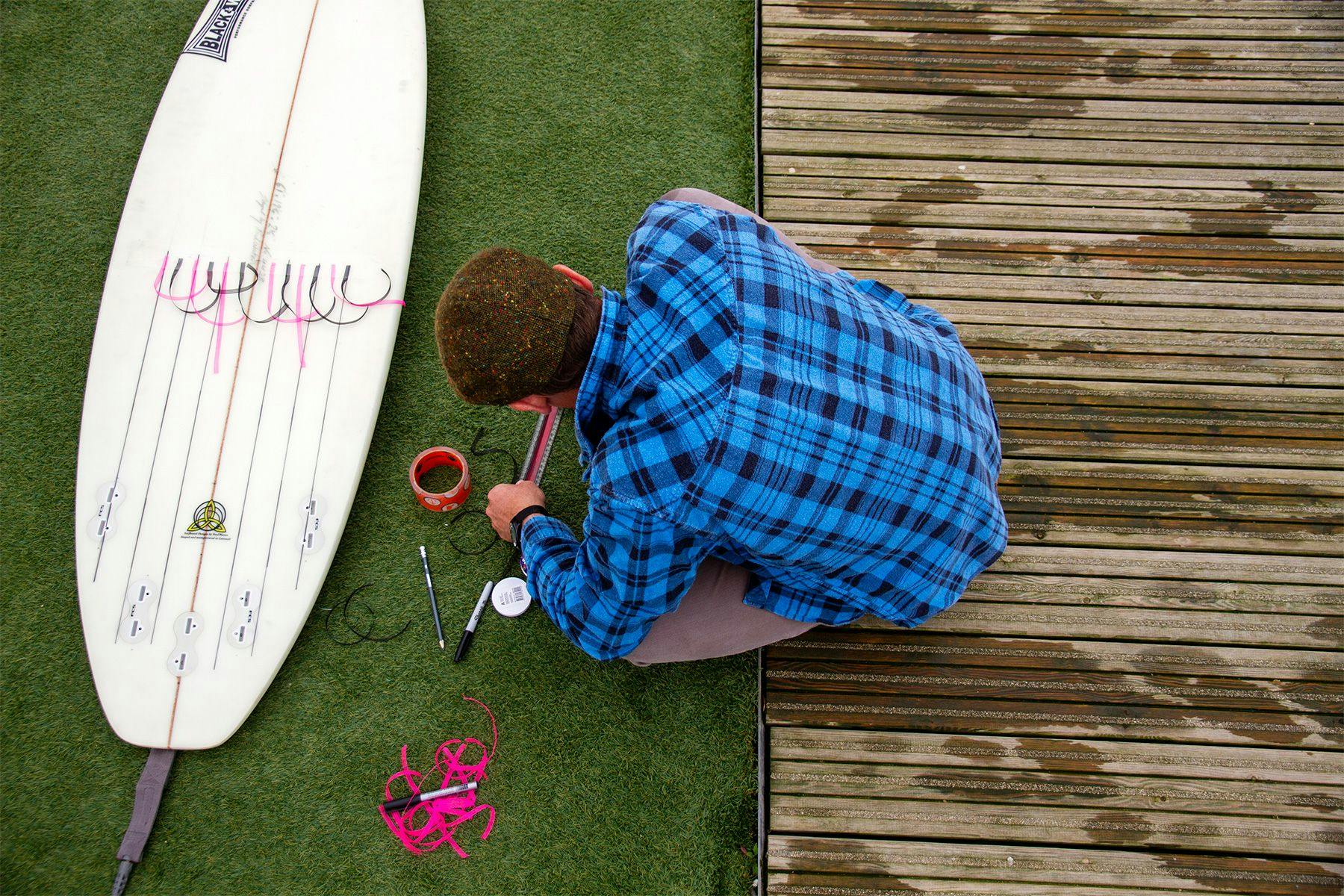
Alternating black and neon-pink ribbons cut to 200mm lengths were attached to the bottom of the surfboard in line with black pen lines drawn parallel to the central stringer, in three rows at the mid-point of the board, in front of the leading fins, and through the fins. I used a clear marine duct-tape, which will have had a small influence on the flow of water across the bottom of the surfboard. The surfboard used was a standard PU thruster shortboard with a slight single concave running through to a squash/rounded square tail.
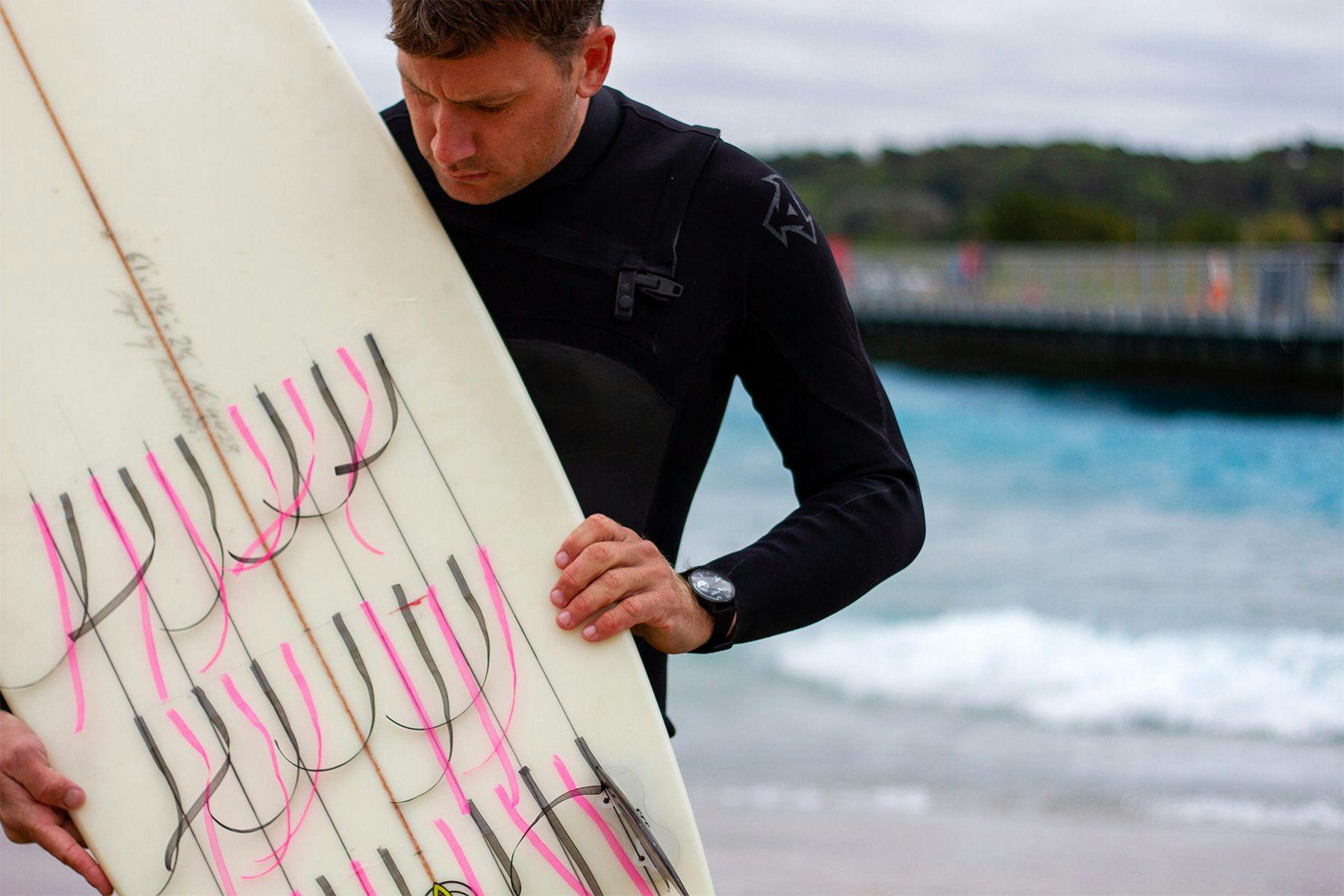
The Wave had some fairly strict health and safety rules regarding in-water photography and open-to-the-public sessions. Their in-house photographer Dan Mullins photographed in the water, ducking under each wave I surfed along with his camera to capture the underwater angle, with a Go-Pro attached to the top to also recording moving image. Surf Simply Magazine editor Mat Arney shot photos from the pier, so we could get multiple angles of each wave. I was thrilled with how much imagery we collected, and the quality of it. We had one shot at this, with perhaps 10-12 wave attempts (so long as I didn’t fall!) in a session that was open to the public. If we’d come away with just one good photo I’d have been stoked, but we came away a ton of great images that make me so excited about what else we could do, or how this could be developed in the future.
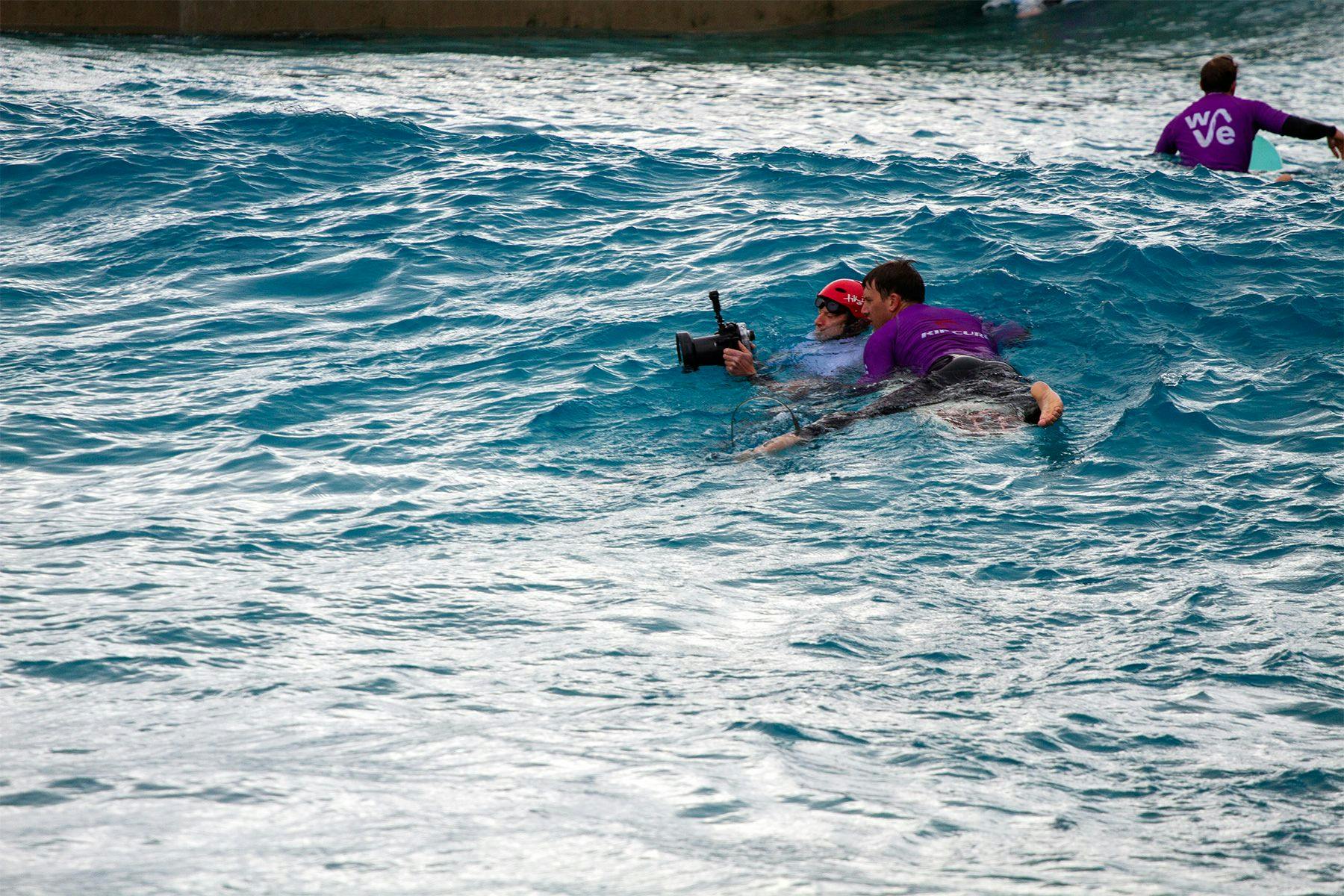
What We Saw
The amount of visible and obvious deflection that we can see in the telltales is amazing. I was hoping that we’d be able to see something, but the combination of the ribbons and pen lines show very clearly how the water was moving along and across the bottom of the surfboard. I was pleased to see that it was broadly in line with what I expected, and also excited to spot a few places where the water flow wasn’t quite what I thought it would be.
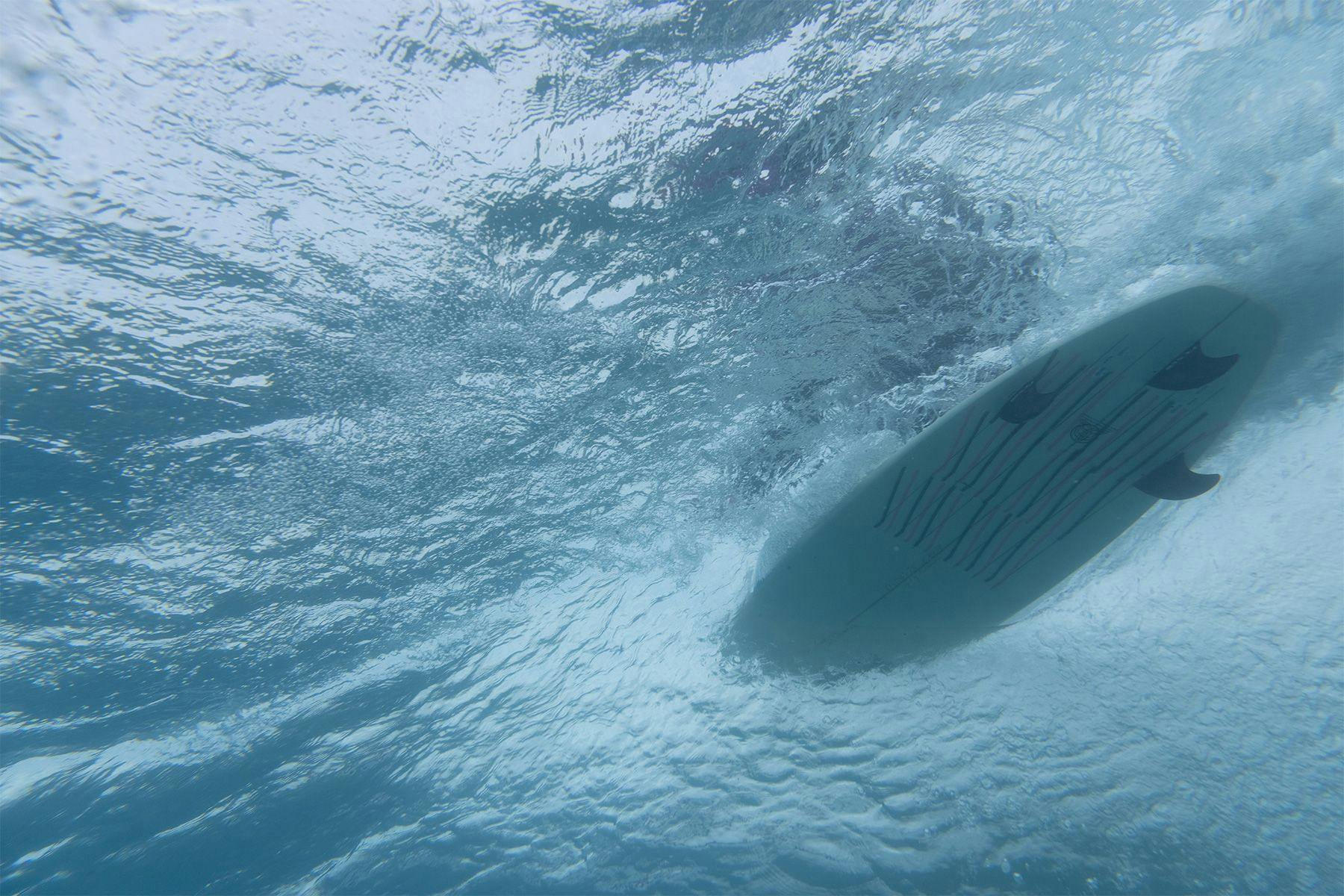
In the middle of the surfboard the water flow was exactly as expected: the induced flow from the board moving across the wave combined with the flow of water coming up the wave face creating an Apparent Flow that expands outward towards the rails at increasing angles as you get closer to the rails. Flow was biased towards the inside rail [the rail most engaged with the face of the wave due to the direction of travel], running parallel to the stringer on the line drawn 50mm (2”) towards the outside rail. Maximum deflection in straight trim across the wave was on the inside rail at approximately 15-20°.
The water flow around the fins was less dramatic than I expected. The deflection shown in the ribbons suggests that the side fins probably do have a positive angle of attack, but it is more subtle that I was expecting, and the suction from the low pressure region around the rails seems to overpower any inward deflection created at the trailing edge of the fin, at least at the base of the fin where we are observing. It also suggests that there will be significant periods when the fin operates at a negative angle of attack. It would be interesting to see if this is true 25mm/an inch higher up on the fin. An interesting follow up would be to put smaller telltales on the fins to observe fin-specific flow at various depths and the interrelation with the flow across the bottom of the board as a whole. Maybe next time!
We can see that the boundary between air and water layers creates some extreme deflections in the water flow. There are several photos that show the ribbons being sucked around at close to 90° when they are close to this boundary region.
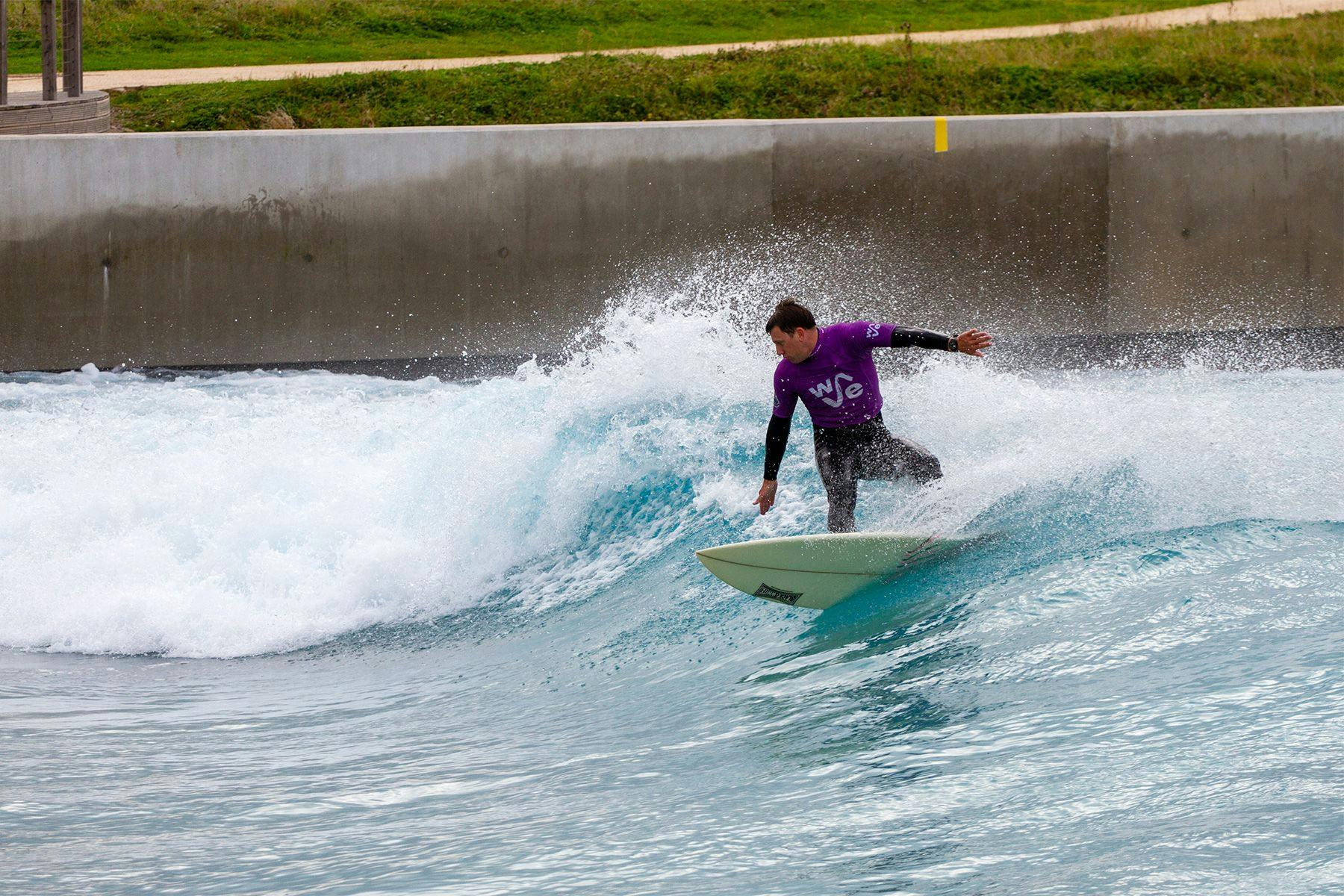
Unfortunately, we didn’t manage to get good underwater shots of the board mid turn. We got one (sadly out of focus) video of a cutback that showed some really interesting potential, but the board was out of position for the stills camera, and we didn’t get any shots of bottom turns. In most of the images the board was in a gentle front-footed rollercoaster either in trim or going top to bottom down the line. In the future, with more time and resources, it would be great to get a timeline of images showing the changing water flow across the bottom of a surfboard as it is turned through a bottom turn and/or a hard carve.
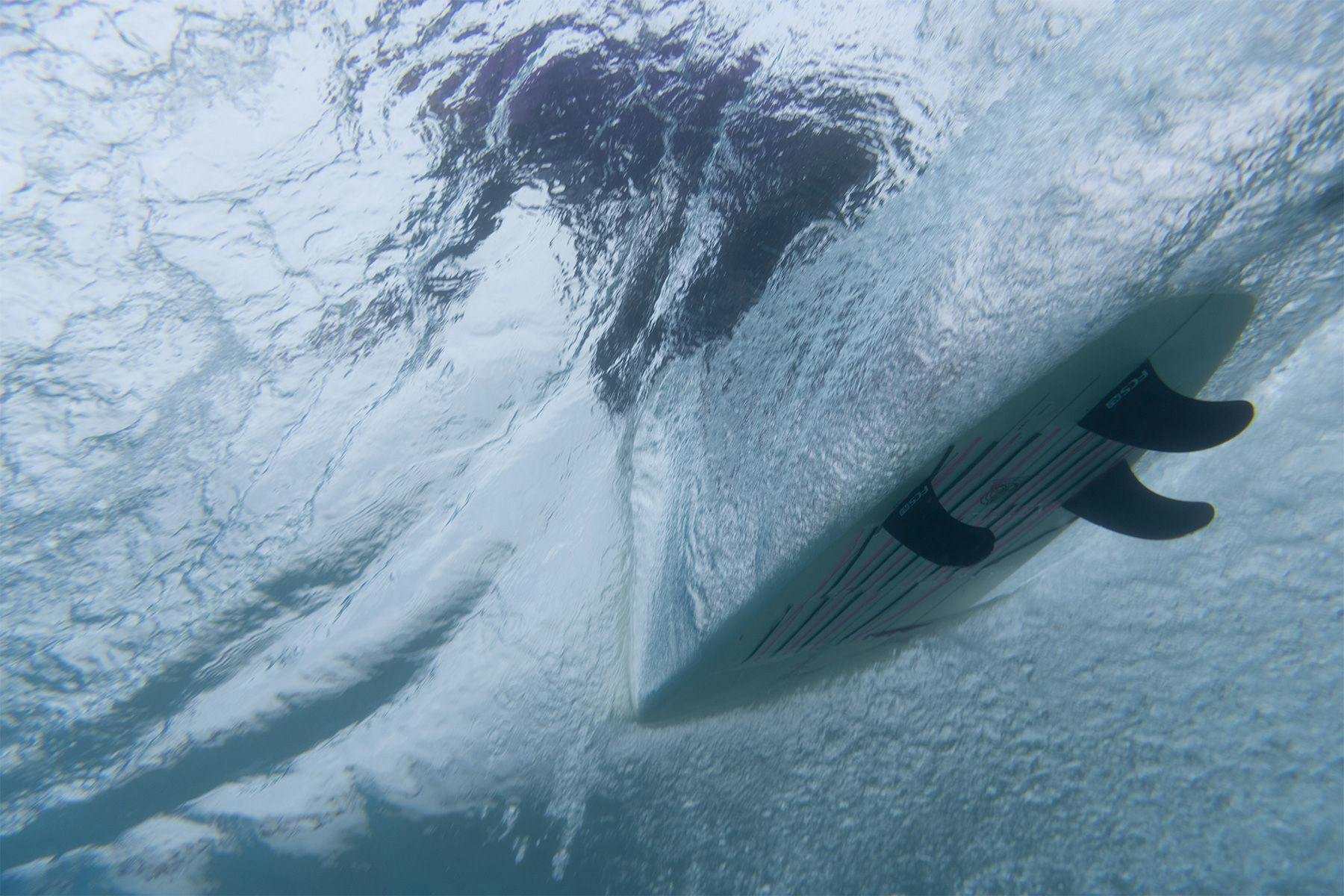
What That Means
Our observations are informed by our knowledge of surfboards and surfing, but there are academics, designers and engineers who specialise in fluid dynamics, and who have devoted their professional lives to doing this sort of work day in, day out. What would one of them make of the images that we captured? We approached a tame scientist from Italy called Riccardo Rossi. Riccardo is the former Head of the Computational Thermo-Fluid Dynamics Laboratory of the University of Bologna and Visiting Professor and Scholar at the Center for Turbulence Research of Stanford University. He specialises in computational fluid dynamics, so modelling the flow of water using computer simulations. He’s a passionate surfer and combines business with pleasure, so has already experimented with modelling the flow of water along the bottom of a moving surfboard. Whilst the computer model that he had already created isn’t a direct comparison because the angle of the board is slightly different and wasn’t run using the same dimensions as the surfboard we used, it provides a great point of reference and shows many similarities:
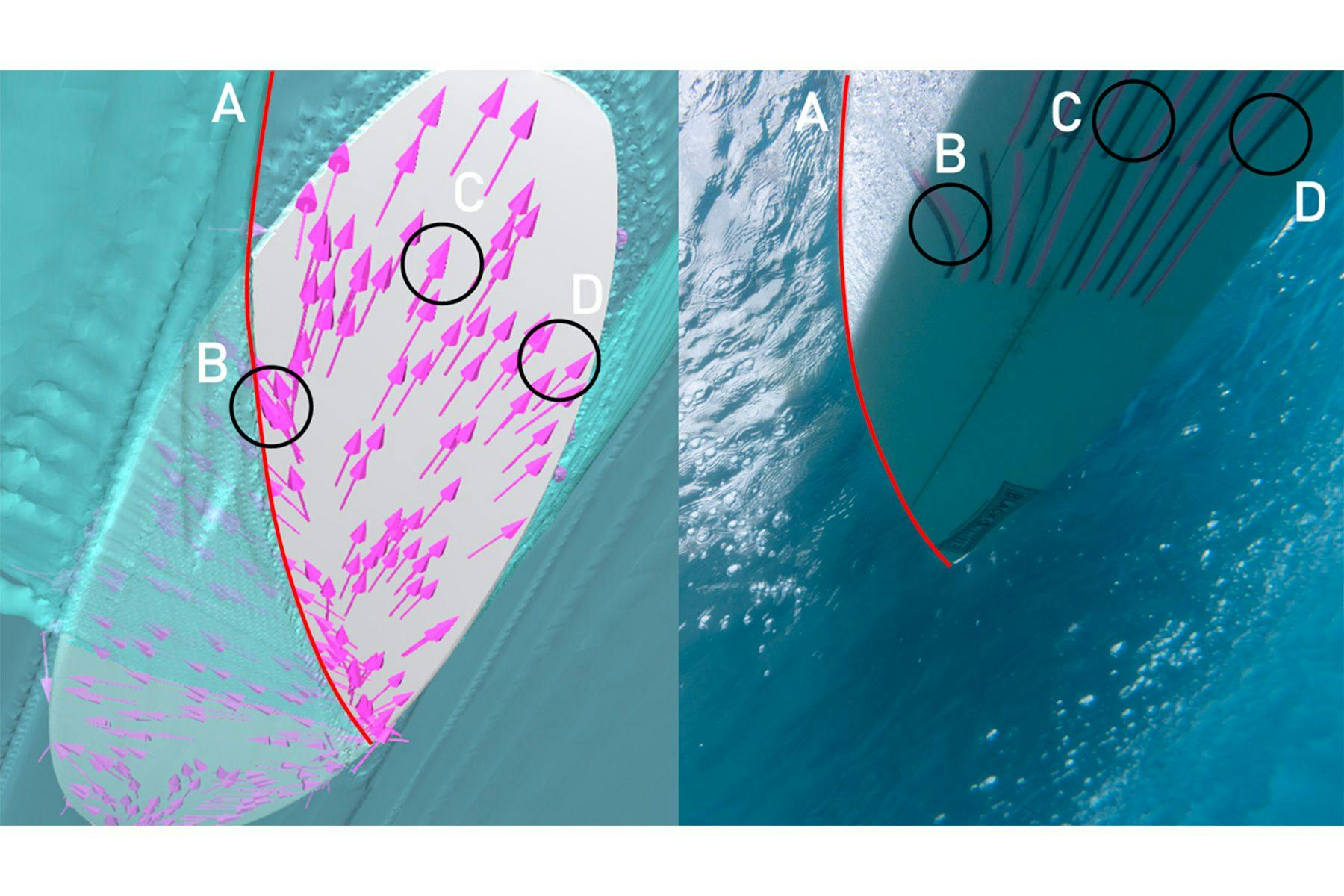
“There are a few features that we can see both in the model and in the pool: the curved shape of the water forced by the board’s surface to bend and flow towards the side (detail A), the water directed towards the disengaged rail where it shears off from it shown by the arrow in the model and by the telltale in the pool (detail B) and the straight water flow at the center of the board (detail C) and the flow bending toward the engaged rail (detail D).
- Riccardo Rossi/Red Fluid Dynamics
What's Next For This Project?
Our experiment and the images that we captured at The Wave were not academically rigorous enough to stand on their own. They are a proof of concept, though, and a starting point. They do not prove my theory about how a surfboard works, but they don't disprove it - they show what I would expect to see if my hypothesis is correct. There are other experiments that I would like to do - I wish for one that we'd put more telltales on different parts of the board. I would love to do a whole series of these experiments.
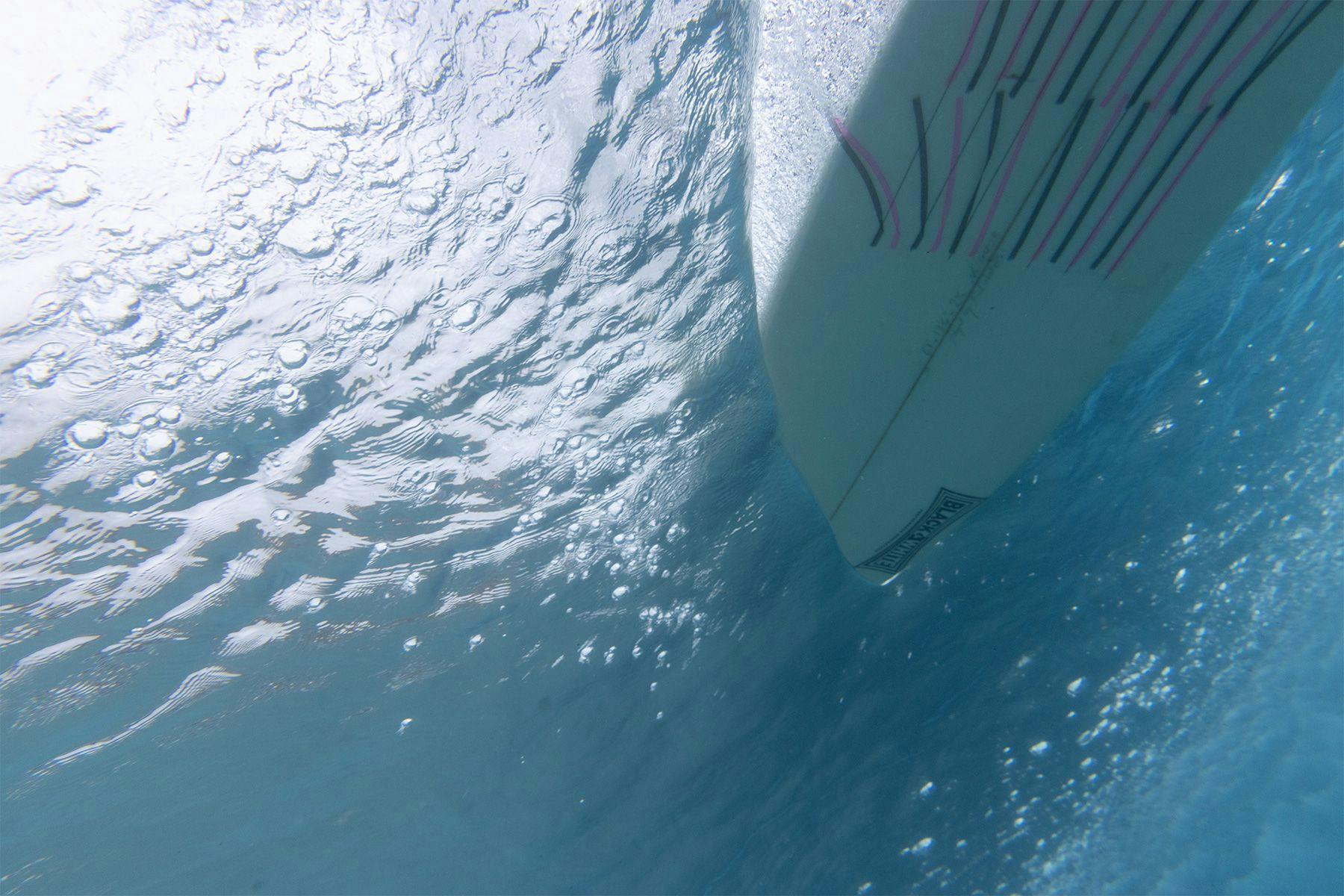
What I would really love though is for somebody else to take this and run with it, and be inspired by it to actually go and put pitot tubes or other sensors on the bottom of surfboards [a pitot tube is an instrument that measures fluid flow velocity, used to determine the speed of aircraft, boats and flow rates of liquids and gases] and surf them in the pool, or come up with other ideas to help us better understand what's going on underneath a surfboard. At the moment I think there’s a lot of room for improvement when it comes to the science of surfboard design.
There are countless examples of when a design, product or tool has been developed by trial and error, or was made a certain way because “that’s the way it’s always been done’ and is accepted wisdom, and then for whatever reason a scientific approach is applied and the result is that huge advancements are made.
The first time people started thinking about aerodynamics for car design or bicycle design, suddenly there was a huge leap forward in performance. The first time that people really started to think about the science of how the sail on a boat works led to boats doing things that were previously thought impossible – sailing closer to the wind for example, which meant that cargo could be transported on new routes or in otherwise unfavourable winds.
I don't think that these images are that light bulb moment for surfing, but perhaps they could be the spark for somebody to do something similar – be they a university student or a larger surfboard manufacturer interested in rigorously testing and refining their designs. So many claims floating around in the marketing of surf hardware products are unsubstantiated beyond the anecdotal and subjective claims of a shaper or professional surfer claiming how something feels under their feet. That’s nice, but it’s not scientific proof.
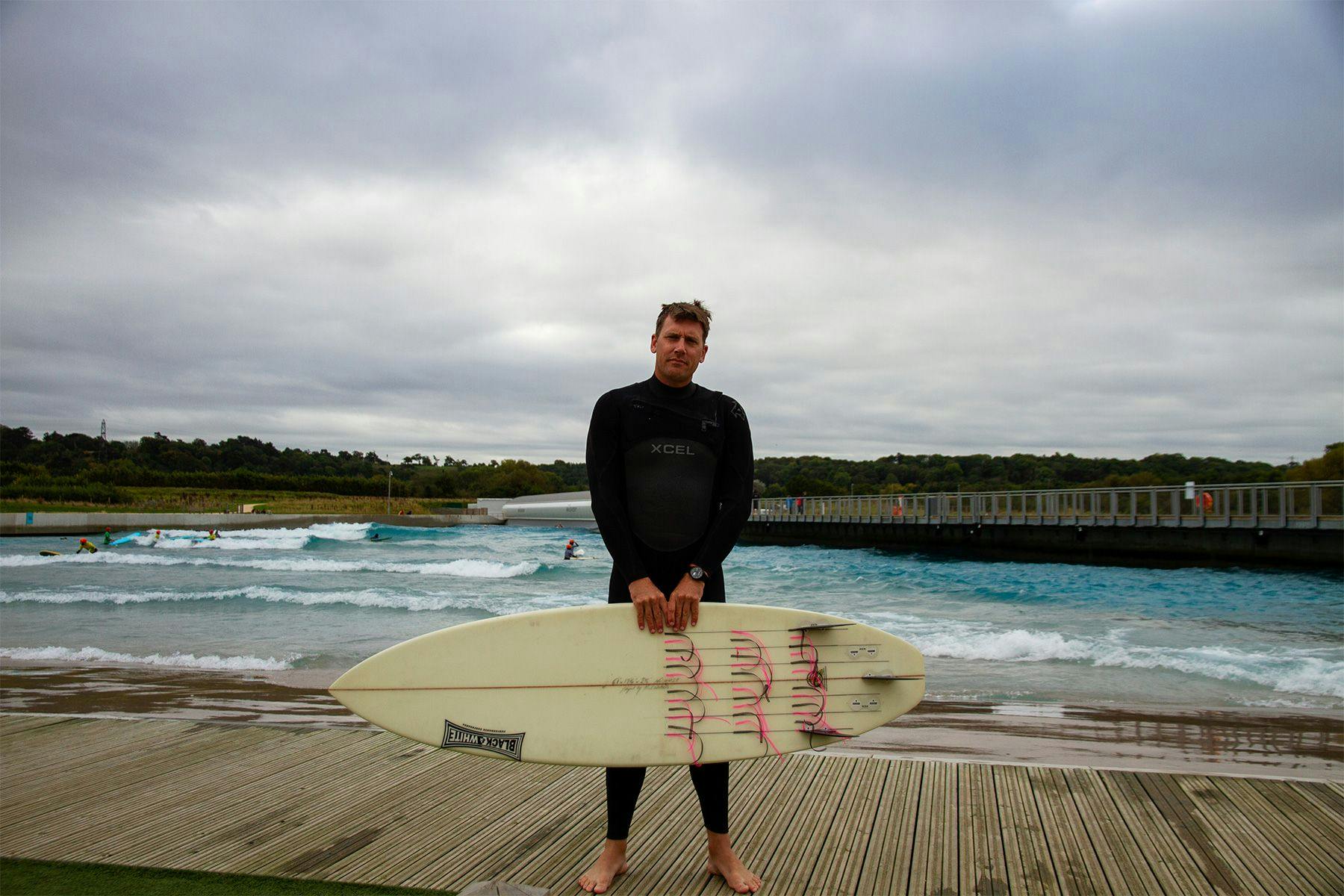
I’m very excited by these images, and can’t wait to see and hear what other people with a greater understanding than I have make of them, or how they develop the experiment. If that’s you, then please get in touch if you have any questions but more so, to let us here at Surf Simply know your thoughts, your adaptations, and your findings.
*****
Surf Simply would like to thank The Wave for accommodating us during a public session, their in-house photography team Dan Mullins and Image Cabin for working with us to capture these images, and Riccardo Rossi of Red Fluid Dynamics for contributing his expert opinion on our results.